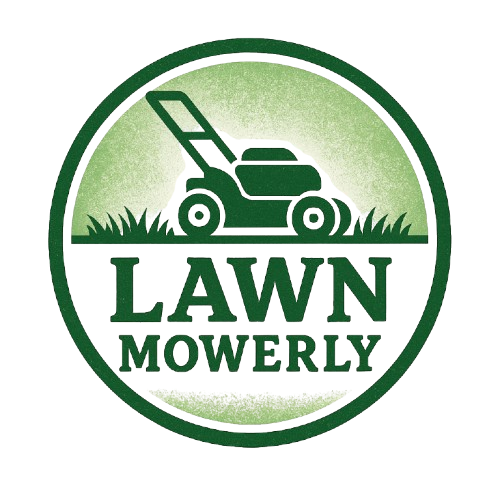
If your yard feels more like a mini roller coaster than a smooth patch of green, it’s time to bring out the big helper — the tow-behind lawn roller. Whether you’re dealing with frost heaves, mole tunnels, or freshly laid sod that needs firm contact with the soil, a good roller can turn an uneven, bumpy lawn into a level, beautiful surface in no time.
Unlike push rollers, tow-behind rollers attach directly to your lawn tractor, riding mower, or ATV, letting you cover large areas effortlessly. They’re ideal for smoothing out uneven ground, pressing new sod, improving seed-to-soil contact, and even giving your grass that golf-course-style finish.
In this guide, we’ve rounded up the 20 best tow-behind lawn rollers for U.S. homeowners in 2025 — from lightweight poly drums that are easy to drain, to heavy-duty steel rollers that tackle tough soil. You’ll find the right pick for every yard size, soil type, and budget — plus expert tips on when and how to roll your lawn without compacting it.
So if you’re ready to flatten bumps, fix uneven patches, and smooth your turf like the pros, let’s roll right in.
When to Roll Your Lawn & When to Avoid It

When a Tow-Behind Roller Makes Sense
A tow-behind roller becomes a worthwhile investment for U.S. homeowners when the conditions align. Here are the expanded key use-cases, with why they work and what to watch for.
1. After laying sod or broadcasting seed
This is one of the strongest use-cases.
- When you install new sod, ensuring solid contact between sod and soil is crucial to root establishment. Research shows sod may be rolled … immediately after installation.
- After seeding, rolling helps firm the soil surface, improving seed-to-soil contact and reducing seed wash-out or displacement.
- It also helps remove air pockets beneath sod which can dry out roots or inhibit rooting.
So, if you are renovating your lawn, newly sodding or reseeding a large area — a tow-behind roller is a very good choice.
2. You have a medium-to-large lawn or property
Size and scope matter.
- Tow-behind rollers are designed for higher coverage areas (hitched to garden tractor, zero-turn, ATV) rather than manual push rollers.
- When your property size is such that a push roller would be slow, labor-intensive, or impractical — that is when the tow-behind model makes economic and effort sense.
So, if your lawn is, say, half an acre or more, or you have multiple acres, it justifies the tow-option.
3. You need to smooth out bumps, frost-heaves, mole or animal run damage, or other surface irregularities
Fixing real surface defects is a key role.
- The University of Tennessee extension document states: “A roller is also a very important tool for correcting minor surface irregularities in established turfs.”
- Rolling can help after frost-heave, which lifts turf and soil during freezing/thawing cycles; also after animal tunneling (moles, voles) or surface disturbances.
So, if your yard has visible lumps, depressions, animal damage, or uneven areas you want to level out for mowing ease or aesthetics — a tow-behind roller is justified.
4. You’re preparing a lawn for heavy use (sports, play, events)
This is an often-missed but valid scenario.
- If your lawn is becoming a play area, sports area, or you expect lots of foot/vehicle traffic, having a smoother, firmer surface increases usability and reduces bumps/trips. Some lawn-care sources mention “safer high-traffic areas” as a benefit of rolling.
- It also helps when hosting events (outdoor parties, social gatherings) where surface smoothness contributes to appearance and function.
So, if you plan your lawn beyond “just mowing” into play/entertainment/usage, the roller becomes more useful.
5. You’re installing or reseeding turf in a region with seasonal heaving or uneven freeze/thaw cycles
Climate & soil movement matter.
- In regions where freezing & thawing cycles occur (Northern U.S., transitional zones) turf can frost-heave, lifting blocks of soil. The UT extension explicitly mentions this.
- After such movement is corrected via soil work, rolling helps smooth and re-level surface.
So, if you live in a climate where your soil/lawn gets winter heave, thaw cycles or shifting, a tow-behind roller is a valuable tool.
6. You’re building new lawn from scratch or doing major renovation
Major renovation projects justify heavier equipment.
- Soil preparation, grading, filling low spots, then rolling gives a better starting surface. Some sources state rolling should occur before planting or after fine grading.
- In new lawn build-outs, you might have sizeable surface to flatten and prepare.
So, if your lawn project is significant (new grass area, big renovation, major leveling) then a tow-behind roller makes sense as part of the equipment stack.
🚧 When You Shouldn’t Use a Tow-Behind Roller (or Use With Caution)
Because rolling isn’t always benign. There are times when using one could be ineffective—or even harmful.
1. Small, flat yards
- If your yard is already fairly flat and small (typical urban backyard, say < ¼-½ acre) and you have few bumps or irregularities:
- The cost, storage and effort of a large tow-behind roller may outweigh the benefit.
- A push roller or manual leveling (shovel/top-dressing) might suffice.
- Key takeaway: don’t buy heavy equipment when the problem is minimal.
2. Wet soils, heavy clay soils, or soils with poor drainage
- Soil compaction risk is high when soils are saturated or when they drain poorly. The soil particles get pressed together, reducing pore space for air and water.
- When the soil is “soft” (wet after rainfall or irrigation), the drum will dig in deeper and compact soils more severely. For example: “heavy rolling compresses soil particles … which leads to poor drainage and weak turf.”
- For clay soils: these already have fine pore spaces and can compact easier. Using a heavy roller in such soil can worsen drainage issues and restrict root growth.
- Therefore: If you have heavy clay, poor drainage, or recently saturated ground → either delay rolling until soil is moderately firm, reduce the weight of the roller, or consider alternative treatments (aeration, topdressing).
3. Over-rolling or using rolling as routine maintenance
- Rolling isn’t meant to be a frequent, regular maintenance tool (like mowing). Over-using it increases risk of compaction, reduced infiltration, thinning turf stands, and shallower root systems.
- For example, one turf-care blog noted: “Shallower root depth, drainage issues, risk of compaction … burying weak grass … stress to the grass plant” result from regular rolling.
- Experts say: if you do choose to roll, do it sparingly (once a year or only when needed) and not as a substitute for proper aeration/topdressing.
- Bottom line: Use the roller only when the condition justifies it (new sod, seed, bumps) — don’t roll simply because “it’s spring” or “I own a roller.”
4. Natural terrain irregularities, deep dips or underlying soil/sub-grade issues
- When the lawn’s bumps or dips come from underlying soil movement, root systems, tree roots, animal tunnels or uneven sub-grade—even if you roll you may not fix the root cause. For example: one guide states: “grass roots club grounds often have level issues … a roller will only help minor levels … to achieve greater depth you’d need other methods.”
- If the terrain slope is steep (> maybe ~10° or significant grade change), rolling may be unsafe, ineffective or cause the roller to dig in or slide.
- If there’s poor drainage or the sub-base is soft (e.g., after heavy rain, site disturbance), rolling may make things worse by compaction rather than leveling.
- In short: if there are deep underlying structural issues → leveling + soil repair + aeration/topdressing is better than relying on a roller alone.
5. Immediately after aeration (or when the turf is stressed)
- Rolling right after a core aeration makes little sense because aeration’s goal is to relieve compaction. Rolling right away might defeat the benefit.
- Also, rolling during high heat stress, drought, or when turf is dormant/hard can injure the grass or compact the root zone. One article mentions rolling in “wrong time or over-doing it” can “actually compress the soil too much.”
- Best time to roll (if at all) is when soil is moist (not soggy), turf is actively growing (or just installed sod), and you have a clear reason to roll (seed/sod, minor soil disturbance).
6. When equipment/vehicle or storage/logistics aren’t suited
- If you don’t have a proper towing tractor/vehicle or safe hitch, a large tow-behind roller becomes a liability (difficulty turning, risk of damage, storage hassle).
- If you lack space for storage, or if transport to your yard is difficult (narrow gates, tight space), then the “big” roller might be more trouble than benefit.
- If maintenance/spares are uncertain (bearings, plug leaks, rust), you may regret buying one for marginal benefit.
Material-Based Tow-Behind Lawn Rollers:
Steel Rollers
Heavy, tough, and built for bigger leveling jobs.
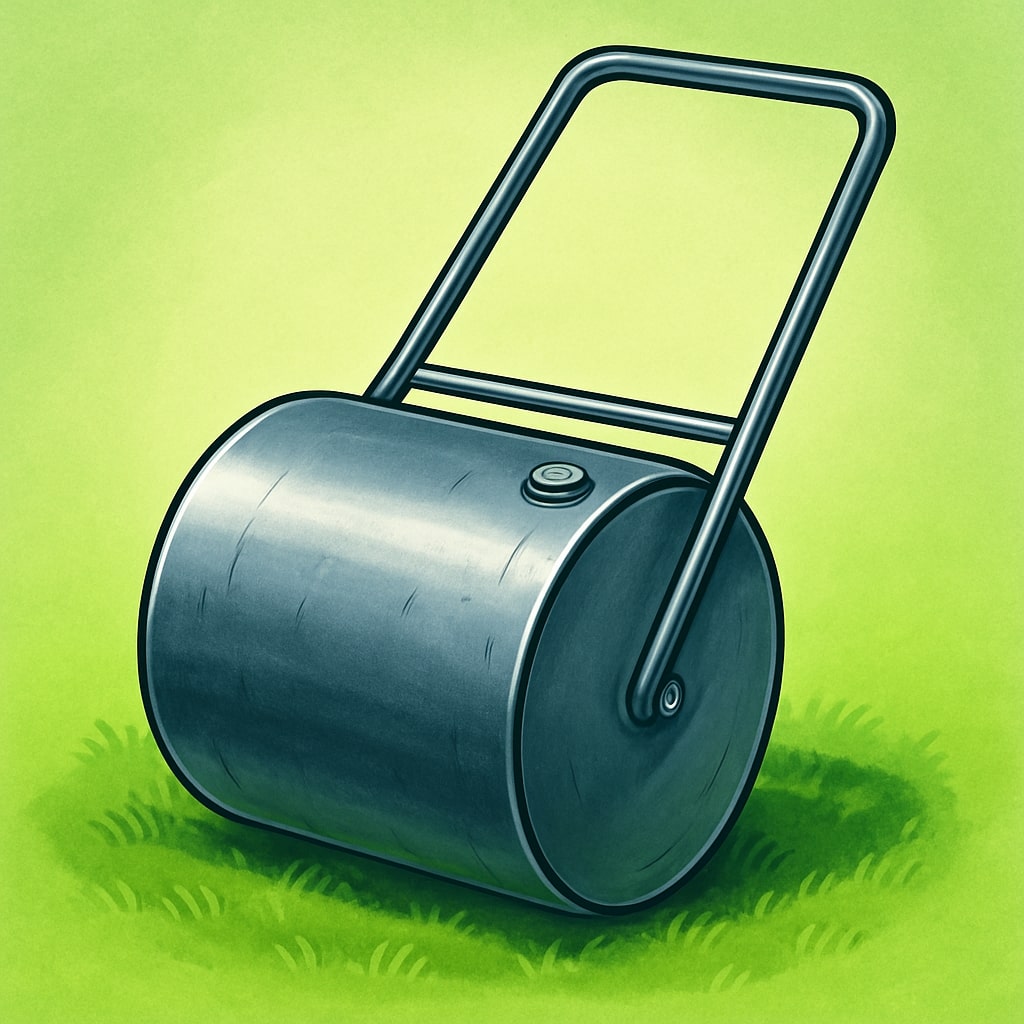
Advantages
- ✔Naturally heavier: Even empty, steel drums weigh more than poly.
- ✔Serious compaction power: Ideal for correcting bumps, pressing soil, and flattening larger or uneven lawns.
- ✔Ultra-durable: Steel handles rugged, rocky, or rough conditions better than plastic.
Key Features
- ✔Many models come with a scraper bar to prevent grass, mud, and debris from sticking to the drum — essential for consistent rolling.
- ✔Can be filled with water or sand for extra weight.
- ✔Often used by landscapers, sports field crews, and homeowners with acreage.
- ✔Require rust-preventive care (paint, storage, and drainage).
Practical specs to check (if shopping)
- Drum wall thickness: common ranges for consumer/commercial drums are from about ~2 mm (thin light duty) up to 5–6 mm or more for heavy duty; thicker is generally stronger but heavier. (Manufacturers often quote gauge or mm.)
- Diameter & width: diameter affects how smoothly it rolls and how it negotiates bumps; width affects coverage. Typical residential tow rollers are 36–48″ (90–120 cm); commercial units go wider.
- Ballast capacity (if fillable): check gallons or liters the drum will hold and the safe fill recommendation (some makers limit sand vs water). Example conversions you can use when comparing:
- 10 US gallons ≈ 37.85 L → ≈ 37.85 kg water weight.
- 16 US gallons ≈ 60.57 L → ≈ 60.57 kg.
- 36 US gallons ≈ 136.27 L → ≈ 136.27 kg.
- 42 US gallons ≈ 158.99 L → ≈ 158.99 kg.
(Use water weight for quick math: ~1 L water ≈ 1 kg.)
- Axle & bearing type: greaseable bearings are great for long life; sealed bearings are low maintenance but when they fail you replace them. Heavy rollers should have live axle bearings sized for load.
- Hitch style & tongue: clevis, pin, ball — make sure it matches your towing machine and check the tongue length/angle so the drum sits flat behind the mower.
- Drain/fill plugs: good large-diameter plugs make filling/draining easier; check sealing quality and access to the plug.
Polyethylene (Poly) Rollers
Think of these as the modern, homeowner-friendly rollers.
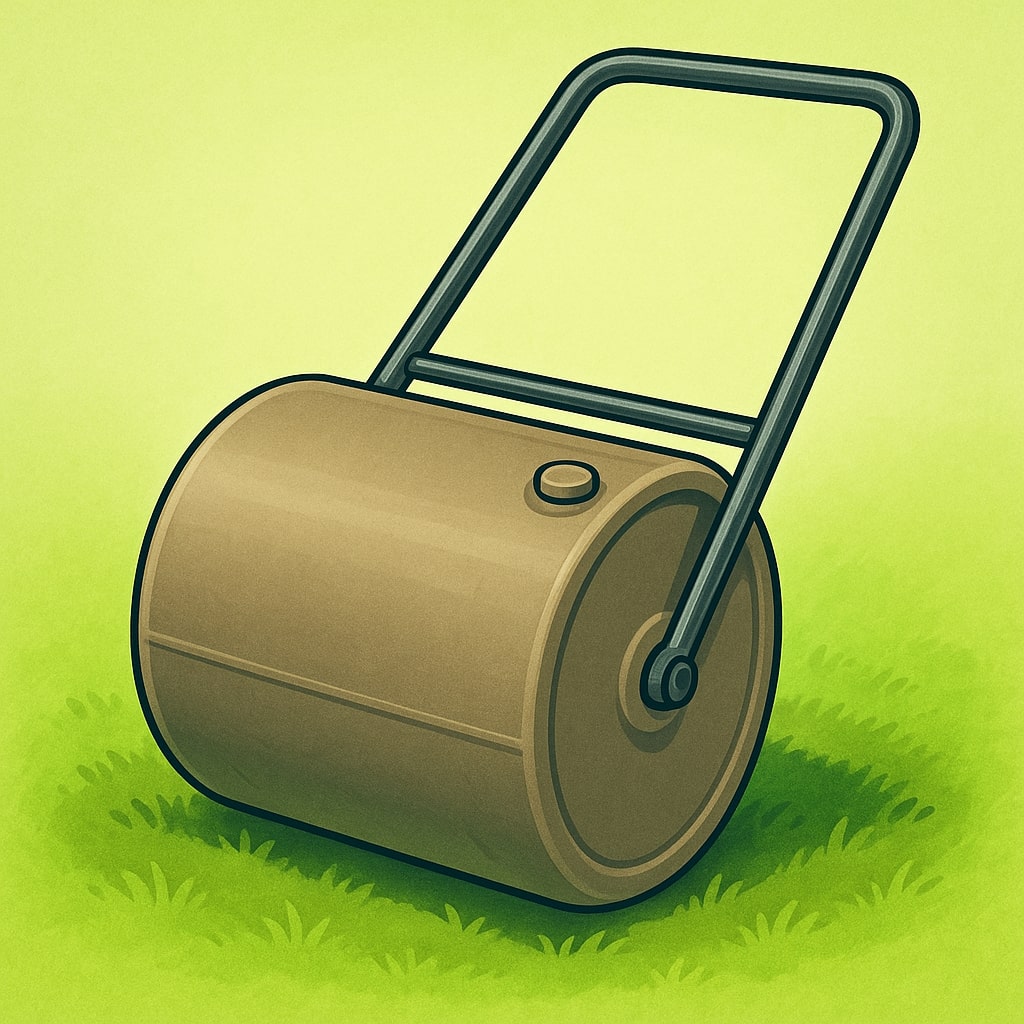
Advantages
- ✔Rust-proof: Poly drums don’t corrode, making them ideal for humid, rainy, or coastal areas.
- ✔Lightweight when empty: Easy to move or store without assistance.
- ✔Affordable: Often the most budget-friendly option for U.S. homeowners.
- ✔Adjustable weight: Fill with water or sand to match your lawn’s needs.
Key Features
- ✔Popular among top U.S. brands: Brinly, Agri-Fab, Ohio Steel.
- ✔Water-filled weight ranges from 200–900+ lbs, depending on model size.
- ✔Large fill/drain plugs for easy seasonal setup.
- ✔Perfect for residential lawns, new sod installation, overseeding, and light to moderate leveling.
Practical specs to check (if shopping)
- Material & molding: Rotationally molded HDPE is preferred; ask if UV stabilizers are included.
- Wall thickness & ribs: Look for internal ribs/baffles and thicker wall sections around the fill/drain and bearing mounts.
- Ballast limit: Manufacturers should state a max safe fill (liters/gallons) — respect it. Poly can usually do water easily, but heavy sand might not be recommended unless expressly supported.
- Filler/drain design: A good screw cap with rubber gasket is essential; larger openings make filling & draining faster.
- Reinforcements: Some poly drums include steel tube inserts at bearing mounts for better load transfer — that’s a good sign.
- Warranty / UV life: Check warranty and whether the manufacturer specifies UV-resistance or expected life in sunlight.
Cast Iron Rollers
Old-school heavyweights — literally.
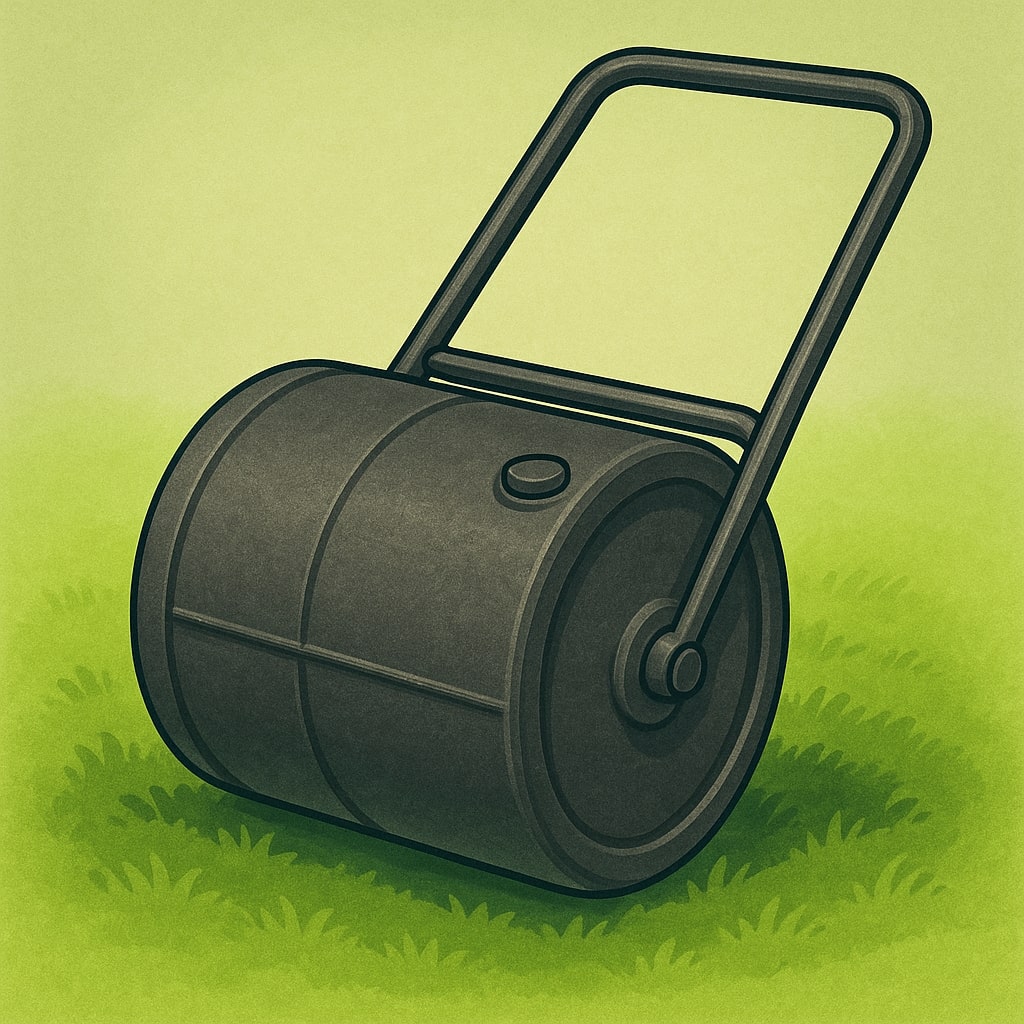
Advantages
- ✔Extremely heavy: Offer maximum compaction with zero fill required.
- ✔Consistent roll: Provide a solid roll unmatched by most modern consumer models.
Key Features
- ✔Now considered rare; mostly seen as antiques, estate equipment, or collector’s items.
- ✔Require significant effort to move, store, or tow due to sheer weight.
- ✔Almost never sold in modern U.S. retail stores.
Tow-Behind Roller Types by Design & Function
Push / Tow Rollers
Versatile tools for small to large yards.
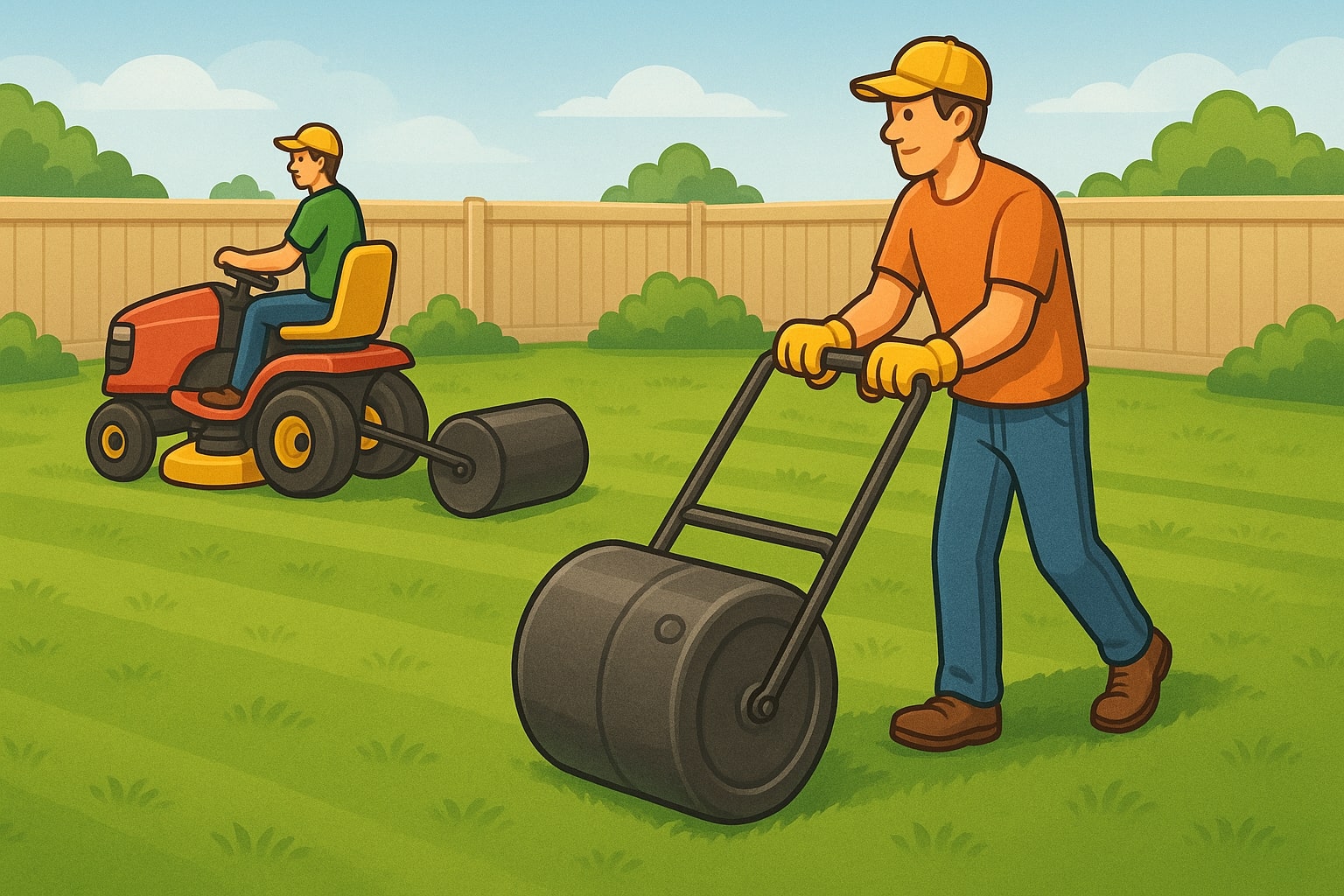
These rollers include a handle for hand-pushing and a hitch for towing behind a mower or ATV.
- ✔Great for mixed-size properties
- ✔Works in small corners & open lawns
- ✔Flexible—one tool for many tasks
Smooth Drum Rollers
The standard, all-purpose roller for lawns.
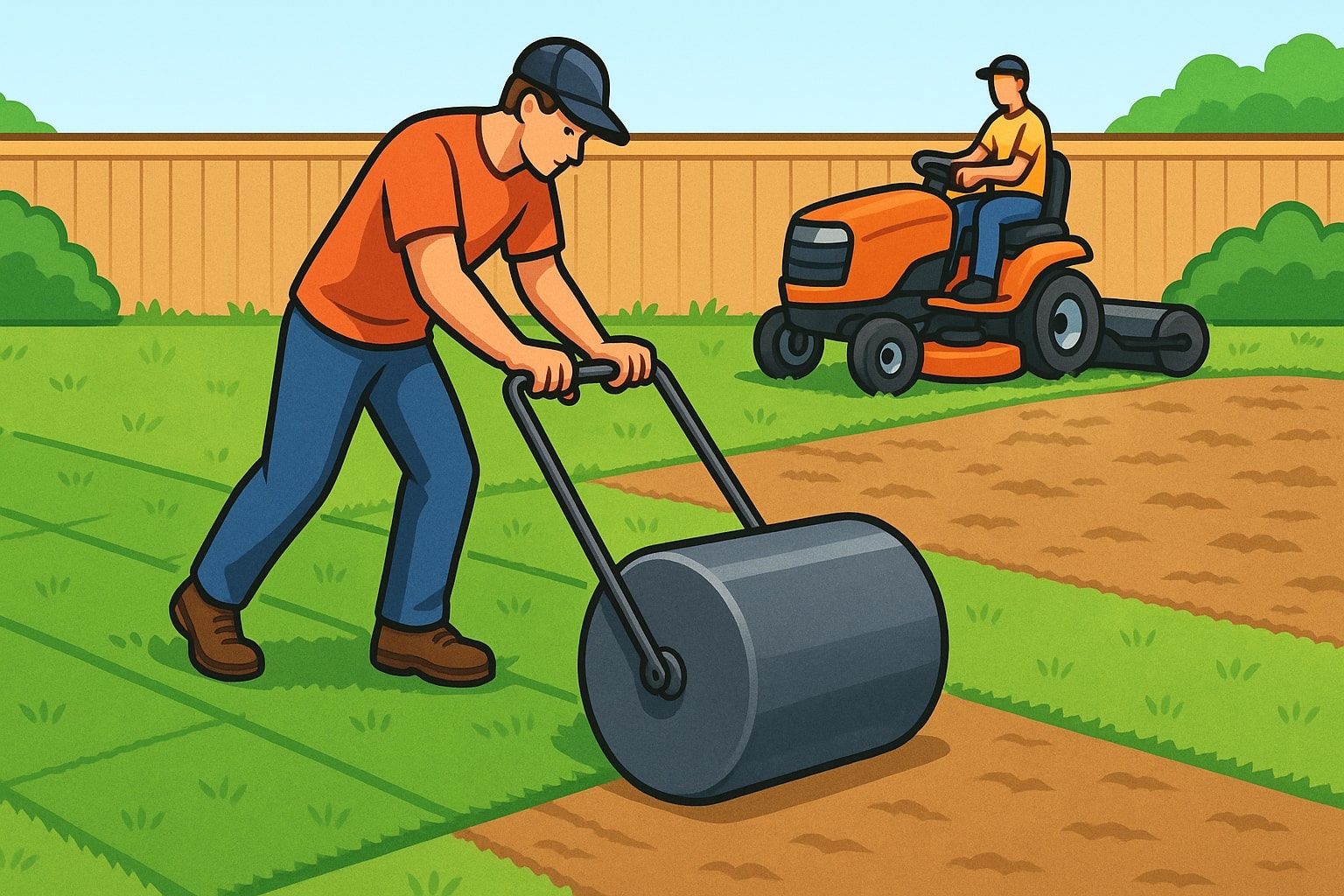
These rollers feature a smooth cylinder that presses grass, sod, and soil evenly without tearing the turf.
Ideal for:
- ✔Installing new sod
- ✔Improving seed-to-soil contact
- ✔Light leveling & bump correction
Tandem Rollers
Double the drums, double the compaction.
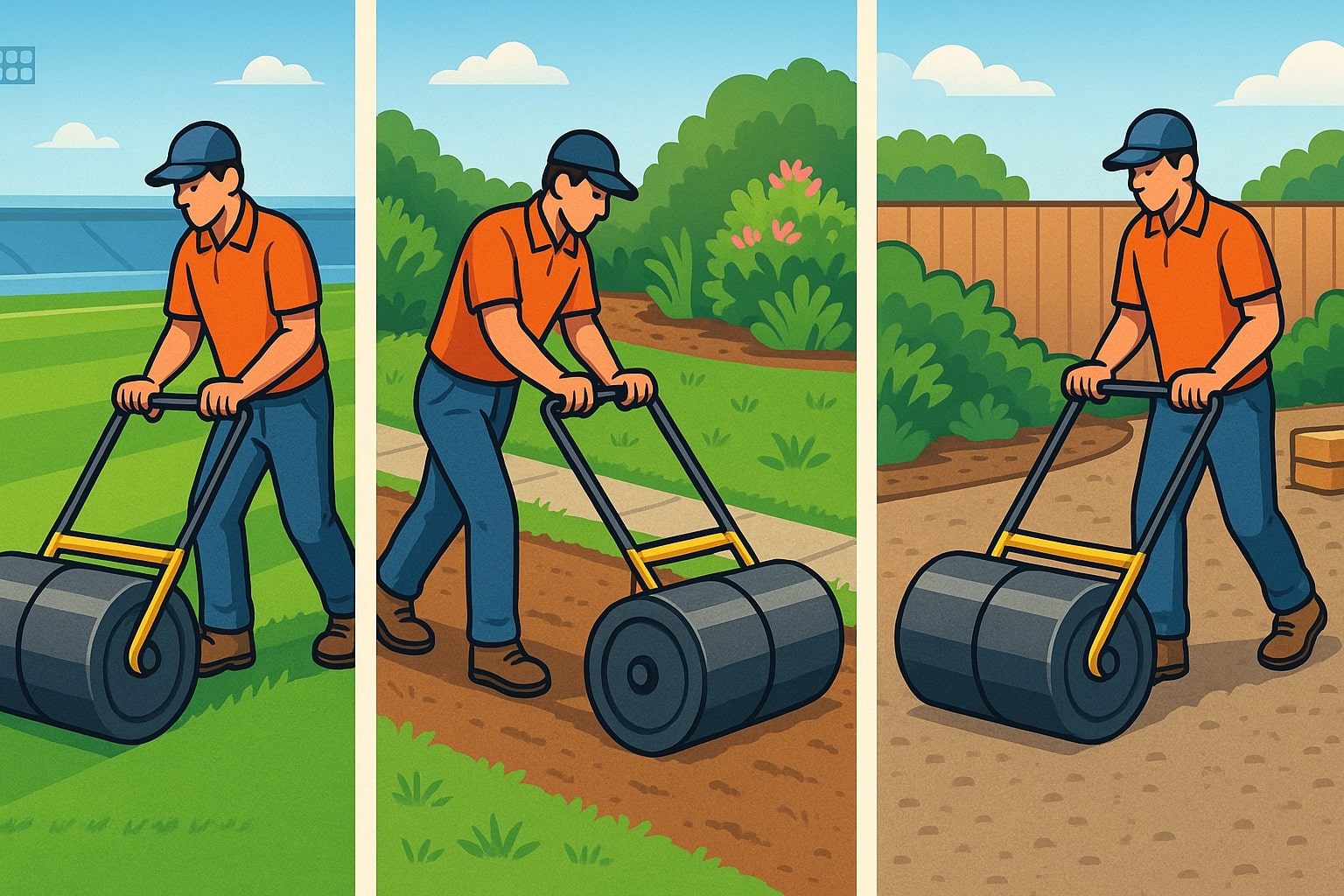
These rollers use **two drums**, one behind the other, allowing them to apply uniform pressure with less bounce and better soil consistency.
- ✔Superior uniform compaction
- ✔Ideal for sports turf & commercial soil prep
- ✔Used in landscaping and light construction

Right Timing + Right Roller = The Best Lawn Results
Soil Texture & Structure
Soil texture (sand, silt, clay) and structure determine how the soil behaves under weight. Understanding your soil type is essential for proper lawn care.
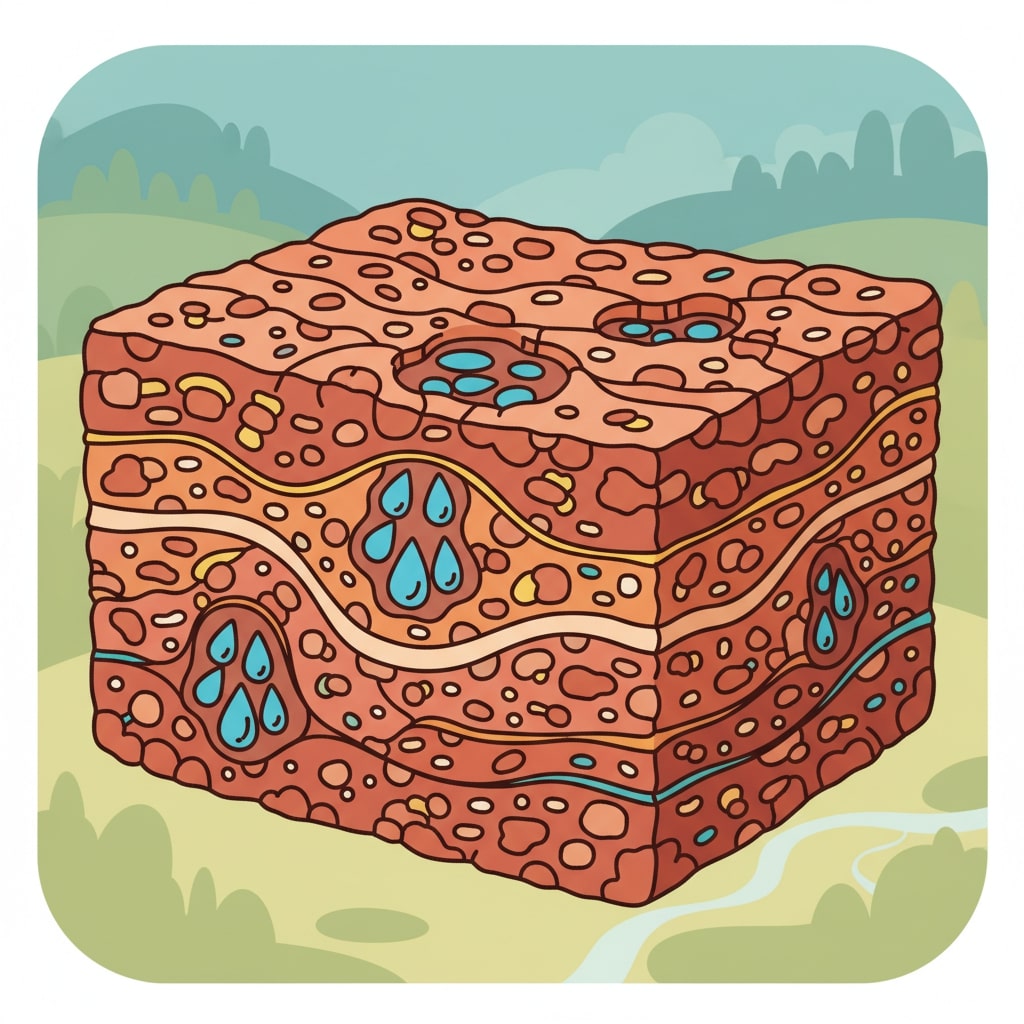
Characteristics
- Common in Midwest, Southeast
- Holds water longer
- Prone to compaction
- Small pore spaces
Rolling Recommendations
- Use lighter roller
- Roll only when moderately moist
- Avoid rolling when wet
- Consider aeration first
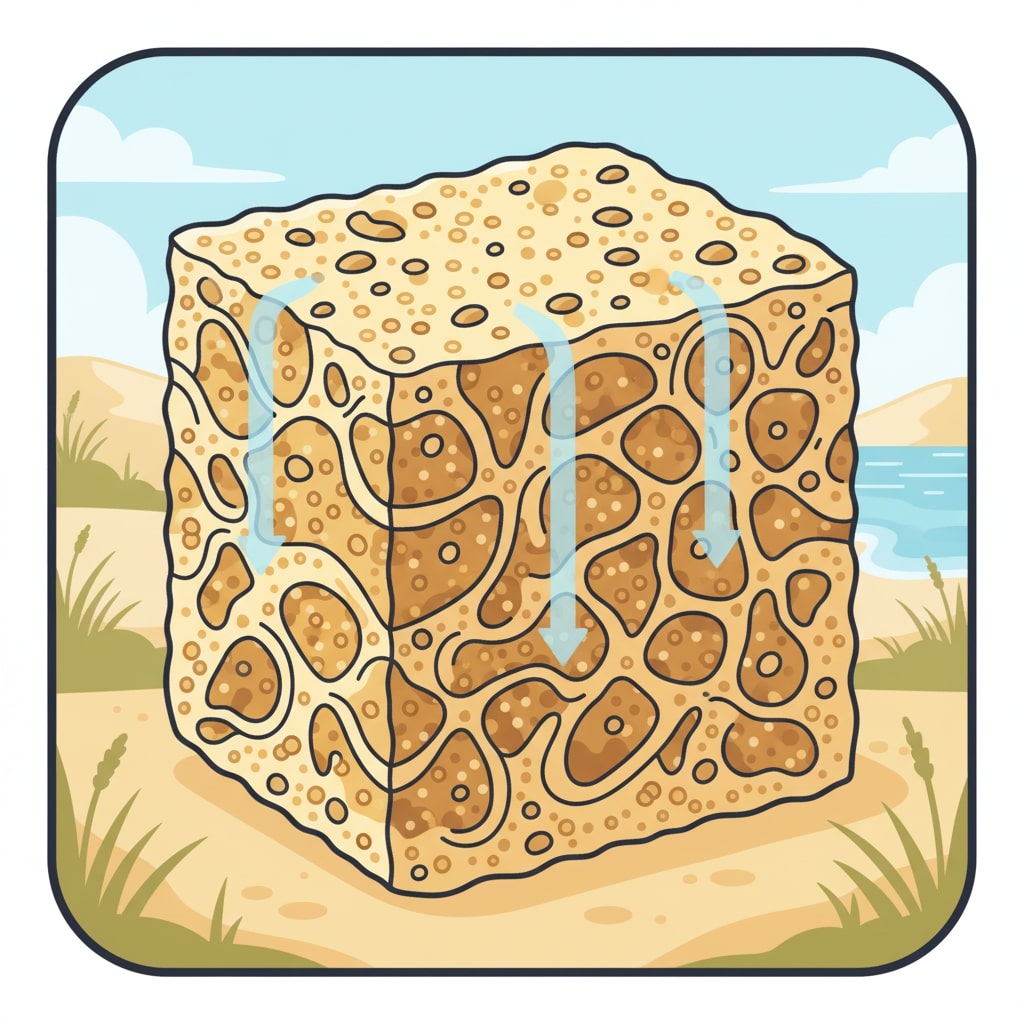
Characteristics
- Common in South, West, coastal areas
- Drains quickly
- Large pore spaces
- Less prone to compaction
Rolling Recommendations
- Standard consumer roller works well
- May require more passes for leveling
- Can handle more weight
- Consider moistening slightly before rolling
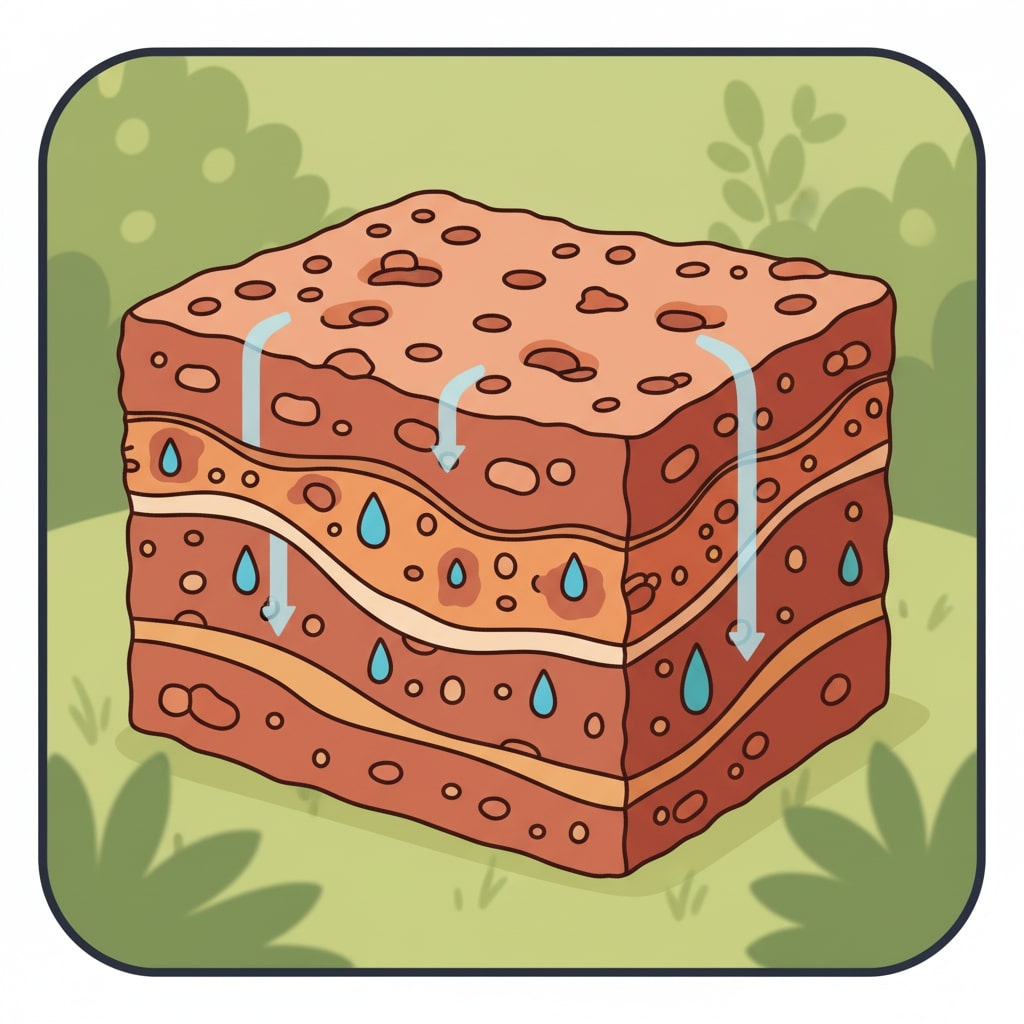
Characteristics
- Balanced mix of sand, silt, clay
- Good drainage and water retention
- Ideal for most lawns
- Moderate compaction risk
Rolling Recommendations
- Standard roller with adjustable weight
- Roll when moderately moist
- Monitor for compaction over time
- Regular aeration beneficial
Why Soil Structure Matters
According to the University of Minnesota Extension:
“soil compaction occurs when soil particles are pressed together, reducing pore space… Heavily compacted soils contain few large pores.”
Mississippi State University Extension Service shows:
Bulk density and root growth are tied to soil texture, especially clay vs sand. Understanding this relationship helps determine the right approach to lawn rolling.
Soil Moisture & Seasonal Timing
Soil moisture dramatically affects how the roller’s weight interacts with the ground. Proper timing is crucial for effective rolling without causing damage.
Interactive Soil Moisture Guide
Adjust the slider to see different soil moisture conditions and their effects on rolling:
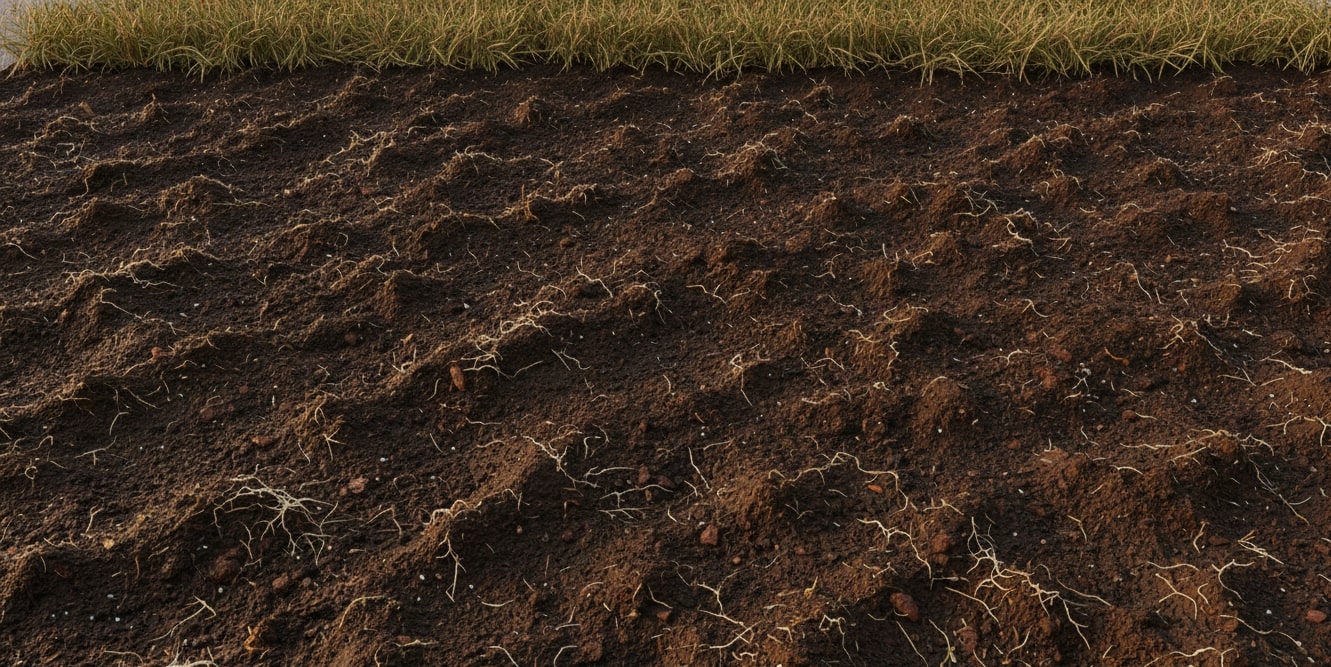
Optimal Moisture
This is the ideal moisture level for rolling your lawn. The soil is moist enough to allow the roller to work effectively but not so wet that it will cause compaction.
Seasonal Timing Considerations
Northern States: Avoid rolling during freeze-thaw cycles. Wait until soil has completely thawed and drained.
Southern States: Can be a good time for rolling if soil isn’t saturated from winter rains.
Northern States: Wait until soil has drained from snowmelt. Avoid rolling too early.
Southern States: Ideal time for rolling after new grass establishment. Avoid during heavy rain periods.
All Regions: Roll during cooler parts of day. Avoid during drought conditions or extreme heat.
Western States: May need to lightly moisten soil before rolling due to arid conditions.
Northern States: Good time for rolling before winter dormancy. Ensure soil isn’t saturated.
Southern States: Ideal for overseeding preparation. Monitor hurricane season for excessive moisture.
Region-specific Conditions & Soil Movement
Regions differ not just by soil texture but by movement (frost-heave, root intrusion, animal activity, high traffic) and the kind of disturbances your lawn endures.
Soil Types
Often clay or loam with seasonal variations
Challenges
Freeze-thaw cycles causing lawn heaves
Rolling Tips
Best in late spring after soil has completely thawed and drained. Use rolling to smooth out heaves before mowing season.
Soil Types
Heavy clay soils are common
Challenges
Compaction from heavy rainfall in spring/fall
Rolling Tips
Only when conditions are right (soil not saturated). Consider lighter rollers or fewer passes.
Soil Types
Mix of clay and sandy soils
Challenges
Long damp periods, heavy storms, weed pressure
Rolling Tips
Best after sod installation or reseeding. Avoid during monsoon season or hurricane season.
Soil Types
Often sandy or rocky with good drainage
Challenges
Soil drying hard and developing crusts
Rolling Tips
Useful for seedbeds. May need to lightly moisten surface before rolling. Ensure good irrigation afterward.
Understanding Soil Movement
Frost-Heave
Common in cold climates, this occurs when freezing temperatures cause water in the soil to expand, lifting the ground surface. Rolling after thawing can help smooth these irregularities.
Root Intrusion & Animal Activity
Tree roots and burrowing animals can create uneven surfaces. Regular monitoring and appropriate rolling can help maintain a smooth lawn surface.
Matching Roller Spec to Soil/Region
Here’s a guide to help you match roller specifications based on your soil type and regional conditions:
Roller Recommendations by Soil/Region
| Soil/Region | Material | Design | Width | Weight | Special |
|---|---|---|---|---|---|
| Clay, small yard | Polyethylene | Push/Tow | 36-48″ | Light fill | Avoid when wet |
| Sandy/loamy, medium yard | Poly or Steel | Push/Tow | 36-48″ | Water-fill | Check capacity |
| Large acreage | Steel | Tandem | 48″+ | Heavy fill | Avoid wet ground |
| Freeze-thaw regions | Steel | Push/Tow | Wide drum | Heavy fill | Post-heave season |
| High traffic lawn | Steel | Tandem | Standard-wide | Heavy weight | Alternate with aeration |
Roller Selector Tool
Answer these questions to get a personalized roller recommendation:
Your Recommended Roller
Complete the questionnaire to see your personalized roller recommendation.
- Determines coverage per pass
- Common widths: 24″, 36″, 48″ for residential; 60″+ for commercial
- Recommendation: 36″-48″ for most suburban yards
- Steel: Better for heavy compaction, more durable
- Poly/HDPE: Rust-resistant, lighter, easier to store
- Vehicle Match: Keep filled roller under 300-400 lbs for consumer mowers
- Water capacity is typically listed (1 US gal ≈ 3.785 kg)
- Sand is ~60% heavier than water but may not be rated for all drums
- Steel drums typically handle heavier ballast better
- Check hitch type (clevis/pin vs ball)
- Measure vertical drop from your mower’s hitch to ground
- Ensure tongue geometry matches your vehicle
- Avoid rolling when soil is too wet to prevent compaction
- New sod/seed: 1-2 passes with moderate fill
- Maintenance: Prefer aeration over frequent rolling
- Look for greaseable bearings
- Check for drain plugs and easy-fill caps
- Consider climate needs (rust resistance for coastal areas)
Quick Buyer Checklist
- 36″-48″ width for most suburban yards
- Poly for rust resistance; steel for heavy jobs
- Note capacity in gallons and convert to kg
- Match filled weight to your vehicle’s tow rating
- Check for maintenance features like grease points
FAQ
🏁 Conclusion: The Bottom Line
A tow-behind lawn roller is a smart, powerful tool — when used intentionally. It can transform uneven lawns, improve seed and sod success, and fix frost-heave or tunneling damage. But it’s not an everyday lawn-care gadget. Overuse or rolling on wet clay soils can do more harm than good.
Choose the right roller material (poly for ease, steel for power), match the width and weight to your mower and soil, and use it only during the correct moisture and seasonal windows. Do this, and you’ll get a smoother, safer, and more professional-looking lawn without risking compaction.
Roll with purpose — and your yard will thank you.

I’m David man behind Lawn Mowerly; I’ve been dealing with lawnmowers and Tractors with my father since I was a kid. I know every make and model and what each one is capable of and love helping people find the perfect equipment for their needs.
